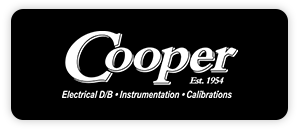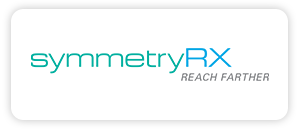Interview with Scale Finance Partner and veteran entrepreneurial CFO, Bill Schiffli
AvidXchange wants to make sure that you not only survive – but thrive – during your year-end closing process. That’s why they organized a panel of financial thought-leaders and AvidXchange customers to share their personal best practices for a successful year-end closing. This live event, Tips & Tricks to Prepare for Year-End Close, took place on September 21 at Avid’s new corporate campus located at the Music Factory. Attendees received 1 CPE credit for attending!
This panel will share information about the tools and reports that they use to help them navigate this stressful time, along with best practices for keeping your team motivated during long work hours over the holidays. In preparation for the event, we sat down with panelist Bill Schiffli, Partner at Scale Finance, LLC., to talk accounts payable and best practices for year-end close in a manual, paper-based system.
Tell me a little about yourself and your company, Scale Finance, LLC.
Bill: My name is Bill Schiffli, and I’ve been a Partner at Scale Finance, LLC for about two years now. We provide integrated financial solutions to help companies scale. Scale Finance currently serves over 120 entrepreneurial companies, and we deliver flexible corporate finance and accounting support, leveraging world-class professional expertise and experience.
Technologies we use include NetSuite, QuickBooks, and ACH. We also use Concur’s easy-to-use business travel and expense management software.
What’s a fun fact about yourself that people may not know?
Bill: I previously worked for a helicopter manufacturer and my first day on the job included a helicopter ride at a couple of hundred foot elevation through some beautiful desert canyons… with the doors off!
That’s pretty incredible. Can you describe your company’s accounts payable process currently?
Bill: Sure! The vendor remits an AP invoice to a designated our AP mailbox. An AP clerk compares the invoice against the purchase order (PO) issued for any discrepancies. Documentation is attached to the AP record and inventory receives matches receiving records against the PO and creates a receiving ticket with fields filled in on the packing slip. The accounting system (NetSuite) is updated to reflect the received inventory. Discrepancies require the PO originator to make corrections to the PO/item receipt as necessary. Recurring expenses like utilities or rent without POs are typically entered directly into AP.
The approver periodically approves pending AP invoices in the queue for payment. Each week an open payables report is created, and invoices that are due are selected for payment. If these invoices are unapproved, the approver is notified and, pending his approval, t invoices are either selected or deselected for payment. Following completion of the weekly cash flow forecast, either a line of credit draw or currently available cash is made available to fund the disbursements. Disbursements are usually made on Friday to allow for “weekend float.”
What does your Month-End Close process look like?
Bill: This is process is driven around a checklist of tasks that are repeated monthly by the assigned team member. Everything is built around an Excel workbook that records the various accounting tasks performed in a structured fashion. As much paper as possible is eliminated, and supporting documentation is loaded into PDF whenever possible. The process goes something like this:
- Gather end of month documents: bank statements, final expense reports, open invoices, etc.
- Perform reconciliations: bank, credit card, inventory, etc.
- Roll forward fixed assets: prepaid, expense accruals, etc.
- Review standard/recurring journal entries for completeness
- Run the critical financial reports, particularly the trial balance and general ledger to give them the “eye test.” Run the budget versus actual profit and loss statement (P&L) to note variances that may indicate further analysis is required.
- Complete the process with:
- Monthly reporting package
- To-do list for the next month’s close
How does Year-End Close different from Month-End?
Bill: Since I typically deal with smaller staffed private companies, usually year-end planning follows this cycle:
- Look at the calendar in September and review the timing of year-end holidays to confirm staff vacation leave plans.
- Contact the external auditor to confirm year-end fieldwork dates, as well as schedules, that are to be submitted.
- Share the calendar with the team members and obtain the necessary buy-ins from staff to the published schedule.
- Look at accounts that need to be cleaned up to put the best picture forward at year-end:
- Pre-emptive clean-up of past due AR
- Clearing out as much work-in-progress for companies that bill services.
- Marshall cash for year-end distributions to shareholders or to pay taxes
- Decelerate purchases that can be deferred [or if a cash-based taxpayer, possibly accelerate purchases]
- Workload-mitigation
- Push benefit plan re-enrollments to asap, say early December, so everything isn’t last minute. This benefits the accounting team members who share HR duties and also the other accounting team members who already have a busy schedule.
- Work around company holiday functions, etc. so that the finance staff isn’t left out while everyone else is enjoying themselves.
What kind of issues do you run into when it comes to Year-End in a manual, paper-based process?
Bill: The information gathering process is the make-or-break factor in getting through the close process in a timely fashion. Simply put, either you figure out a way to master the process, or it will master you and your staff. Sometimes you can work with a third party, like your credit card provider, to move to a more accommodating cutoff date that matches up with your monthly close schedule.
Do you have any best practices or general advice for AP professionals regarding year-end close?
Bill: Update the master vendor file with each notification from the vendor (i.e., ongoing maintenance). Periodically review the fields in your Master Vendor Files, i.e., are you capturing too much or too little information and consider the benefit of making changes as necessary. Make sure you have a strong policy/controls around the use of “one-time” vendors if you want to allow them under any circumstances.
When it comes to 1099 maintenance, have a policy in place to require W-9s of all new vendors; you rarely receive pushback when you ask for this, and the cooperation is outstanding when you are holding the vendor’s payment. It is easier to have a policy requiring W-9s than having an elaborate process for determining in advance if you need to file a 1099 for a vendor. Pay close attention that the federal tax classification is filled in on the vendor W-9 so that your staff can determine whether or not there will be a 1099 filing requirement at year-end [front-end work to eliminate problems at year-end]. Run 1099 reports after 3rd quarter to review for missing information and set a target date for having this cleaned up.
Ensure sufficient levels of review are in place to catch errors and ease the burden on one person. Year-end starts at the beginning of the year by making sure the processes and controls are in place during each month-end so when it comes time for year-end it does not have be an overwhelming time. Making sure each employee understands what is required of them during close is critical. To keep up morale during year-end, utilize cross-training so other team members can share the burden of work, especially if it’s tedious. Plan after-work outings when deadlines are met and bring in meals and snacks throughout the process. Acknowledge that crunch-time can be hard and but their contribution is appreciated.
Regarding reporting tools or technologies that are helpful to the process, have a comprehensive checklist that shows the different tasks for accounting close – financial and statutory reporting that shows due dates and owners is valuable to ensure an item does not get missed. Spend time reviewing monthly trial balances/financial statements to identify trends that could be an error in the ledgers. This can be augmented by reviewing variance reports.
About Scale Finance
Scale Finance LLC (www.scalefinance.com) provides contract CFO services, Controller solutions, and support in raising capital, or executing M&A transactions, to entrepreneurial companies. The firm specializes in cost-effective financial reporting, budgeting & forecasting, implementing controls, complex modeling, business valuations, and other financial management, and provides strategic help for companies raising growth capital or considering M&A/recapitalization opportunities. Most of the firm’s clients are growing technology, healthcare, business services, consumer, and industrial companies at various stages of development from start-up to tens of millions in annual revenue. Scale Finance has multiple offices in the Carolinas including Charlotte, Raleigh/Durham, Greensboro, and Wilmington with a team of more than 45 professionals serving more than 130 companies throughout the region.







